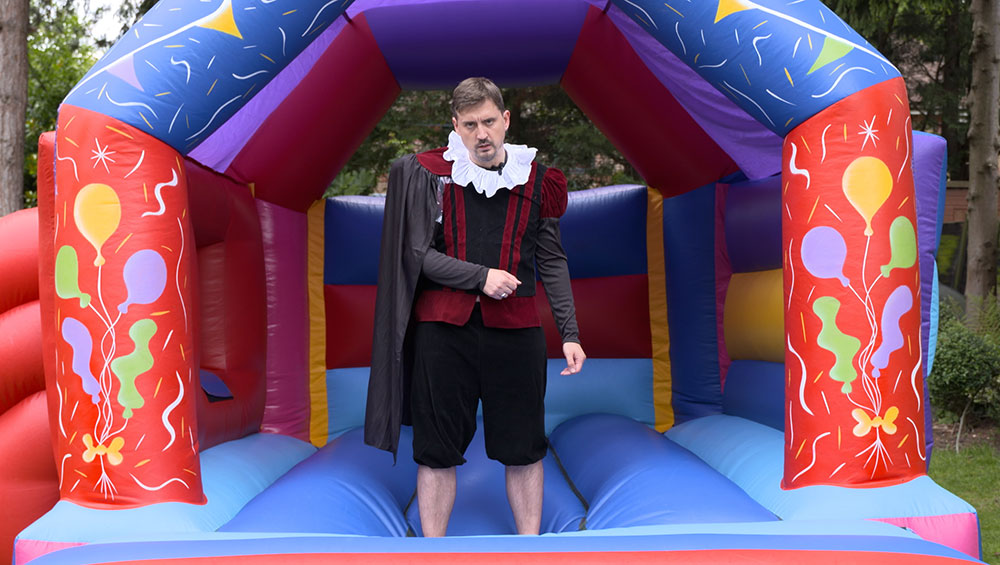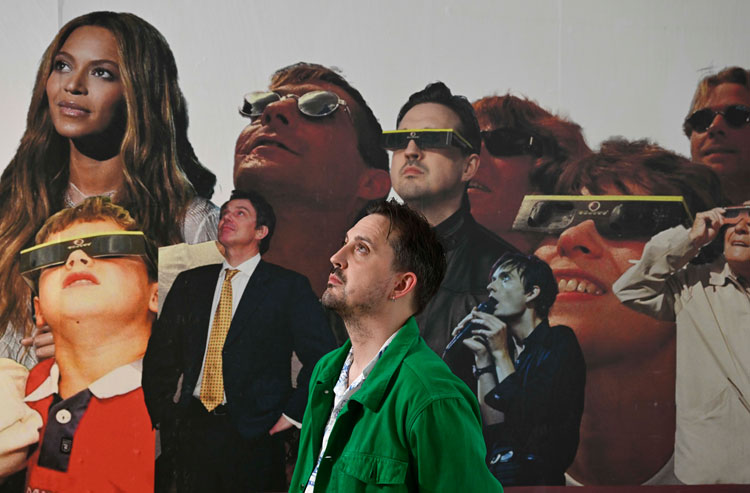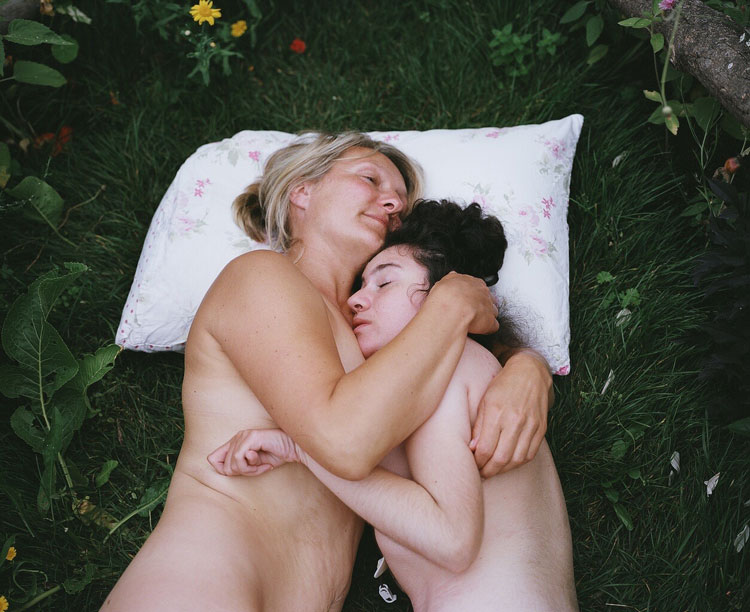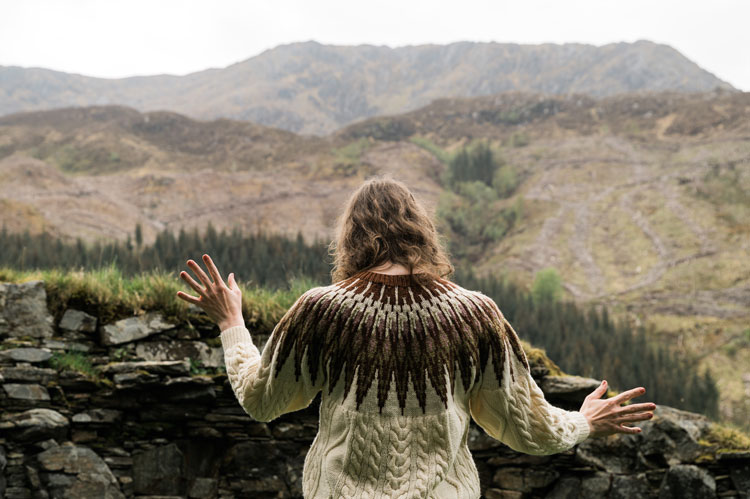
Guy Oliver, Badly Drawn Boys, 2022. Video still. Courtesy of the artist.
by BETH WILLIAMSON
For just over two weeks in August, Edinburgh Art Festival (EAF) enjoys its most visible moment when a frenzy of activity, exhibitions and open studios come together to represent a year-round programme of partnerships, events, residencies and research. This is, I suppose, the public face of a civic enterprise that works throughout the year with the aim of developing a more accessible and engaging programme, especially for those who have historically been excluded. Alongside this, a large number of galleries and museums already have their own extensive programmes, which contribute significantly to the EAF offering. Among the parties, performances, talks and workshops scheduled for EAF25 (and let’s be clear, these do lend focus and draw the visitors), it is the longer running exhibitions at venues such as the National Galleries of Scotland, Fruitmarket and City Art Centre that form the backbone of this annual artistic extravaganza.
The retrospective exhibition Andy Goldsworthy: Fifty Years laid out in the Royal Scottish Academy on the Mound (until 2 November 2025) is a perfect example of an exhibition on a monumental scale that foregrounds the work of an international land artist who has worked quietly in Dumfriesshire for the last 40 years. Conceived of as a single artwork by Goldsworthy, it shows the enduring power of his vision, interrogating the relationship between humankind and the working land. One of the most impactful rooms shows Oak Passage (2025). On entering the space, the work appears impenetrable. It is only when you reach one end of the room or the other that the clear path through the middle becomes visible. As Goldsworthy explains: “The passage of people, whether it be through a building or the land, lies at the heart of my practice.” Oak Passage is at the heart of this exhibition and leaves the visitor in no doubts about Goldsworthy. It is an astonishing display of his ingenuity and fortitude as an artist practicing over decades and one that has been shared in such a powerful way in the gallery.

John Bellany, Sad Self-Portrait, 1976, at City Art Centre, Edinburgh until 28 September 2025. © The Estate of John Bellany.
I have already written about Mike Nelson’s exhibition Humpty Dumpty, a transient history of Mardin earthworks low rise, at Fruitmarket (until 5 October 2025), so I won’t repeat myself here. Suffice to say that it is a powerful show and one that strengthens Nelson’s practice. At the City Art Centre, John Bellany: A Life in Self-Portraiture (until 28 September) is a thoroughly captivating account of the life an artist who battled alcoholism and ill-health for much of his life. Seeing the self-portraits from the very beginning of his career until the end of his life is an emotive journey. It tells the tale of a bold young artist who presents himself as heroic. That image changes quite quickly and we see someone struggling with his demons while forging his identity as an artist. This continues through to his very last drawing. Still working at very end of his life when he could hardly see, he had an indomitable spirit to carry on making.

Guy Oliver, Millennial Prayer, at Jupiter Artland until 28 September 2025. Photo: Neil Hannah.
At Jupiter Artland, Guy Oliver’s pacy film Millennial Prayer (until 28 September 2025) is intelligent, engaging, serious and sometimes laugh-out-loud funny. Looking back at his experience of the years 1999 and 2000, Oliver pieces together a picture of the milieu that teenage boys were growing up in as they emerged into the new century. It acknowledges a particular cultural moment and muses on his personal memories of events such as the wobbly Millennium Bridge and the Columbine massacre, as well as now defunct objects such as the VHS tape. There is no slack in this hour-long film that definitely holds attention. It is one of the best artist’s films I have seen in a long time.

Siân Davey, The Garden XII, Copyright Siân Davey, Courtesy Michael Hoppen Gallery, London.
Centre for Photography, Edinburgh until 30 August 2025.
At Stills Centre for Photography, part of Siân Davey’s series The Garden is on display throughout August. This superbly tender group of photographs emerged when Davey and her son created an immersive wild flower haven in their garden over a period of three years. It was open invitation, for passersby or by word of mouth, that people use the garden and asked to be photographed. No directions were given, and sitters had an entirely free choice about how they should appear – asleep or awake, naked or clothed, alone or together. The space became a haven for people to sit and reflect and connect with one another. Davey’s photographs covey a relaxed openness. In this respect, it is perhaps helpful to know that Davey previously spent 15 years as a humanistic psychotherapist. As the founder of the Creative Body Process, she weaves photography together with psychotherapy and her experience of many years spent in practice in Tibetan Buddhist monasteries. She says: “Creativity is the path to wellness. It’s our libido, it’s our vitality, it’s all of it. It’s where we hold our connection to life.”

Aqsa Arif, Raindrops of Rani, at Edinburgh Printmakers until 2 November 2025. Photo: Talha Imam.
Another show worth mentioning out of many possible is Aqsa Arif’s Raindrops of Rani at Edinburgh Printmakers (until 2 November 2025), comprising a film and a series of digital and screenprinted textiles presented within sculptural frames. Drawing on her experience of arrival in the UK as a refugee from Pakistan, Arif’s work explores life in a high-rise council flat on an estate in Glasgow’s Prospecthill. Residents were later displaced to allow for the shooting of the 2006 Sony Bravia “paint” commercial. It’s a shocking reminder of how communities are at times mistreated. This brings me back to EAF25 itself and its mission to include those who are often excluded. In the EAF Pavilion, a shared hub made possible through a new partnership with Outer Spaces (a programme that finds studio spaces for young artists) is a commissioned film by Lewis Hetherington and CJ Mahony focusing on the lives of queer Scottish people across history. Four writers respond in four languages (English, Scots, Gaelic and British Sign Language), bringing to life experiences that are often made invisible through the erasure from history of marginalised people. It is a film that, to my mind, could be shown in schools around Scotland to promote inclusivity and greater understand of what it means to be marginalised. As a commissioned work, it is to EAF25’s credit that it has been made.

CJ Mahony and Lewis Hetherington: for who will be remembered here, Photo: Tiu Makkonen.